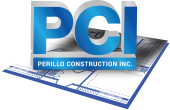When it comes to negotiating a new lease, tenant improvements are a crucial part of the negotiation. Tenant improvements by your landlord typically takes one of two forms – the tenant improvement allowance or the turnkey build out. Let’s explore the difference between the two as well as the advantages and disadvantages of each type.
The Tenant Improvement Allowance
With a tenant improvement allowance, a cash allowance (negotiated as part of the lease) is provided for construction and related costs, leaving the tenant responsible for costs in excess of the agreed upon allowance. For tenants who have negotiated well, if construction costs are less than the allowance, the tenant retains the difference. In a tenant improvement allowance scenario, the tenant is financially responsible for overages and should manage the construction and related costs.
The Turnkey Build Out
In a turnkey build out approach to tenant improvement construction, the landlord covers the sole cost of the construction and controls all the involved elements. The landlord, who bears al the financial risks in regard to the construction costs, manages the process and covers any cost overruns during construction.
The Advantages of a Tenant Improvement Allowance
For the tenant, the advantages of the tenant improvement allowance may seem obvious. As the tenant, you retain control over the construction process as well as the budget, affording you the opportunity to ensure the quality of the workmanship as well as the materials to be used in your leased space. This is also advantageous should your business have specialized or custom construction requirements. Since you as the tenant are overseeing the construction process, you can assure all of your requirements are met and are up to your company standards. In addition, as mentioned, if you have properly negotiated your tenant improvement allowance, and your construction costs remain under that amount, you will be able to keep the cost savings. As a bonus, if your business has multiple locations, you may be able to leverage pricing across the board.
The Disadvantages of a Tenant Improvement Allowance
The major disadvantage to a tenant improvement allowance is if the costs go over the agreed upon amount, the tenant is responsible for the overage. As the tenant you will also be responsible for negotiations with contractors and government entities, as well as managing them. If your business is small or you are just starting out, this may mean less leveraging and purchasing power than your landlord. You may also find you are liable for costs should base building deficiencies arise. You may also face capital outlays upfront. Plus, your landlord will probably want to approve architects, contractors, and engineers unless you have negotiated vendor approvals in your lease. Finally, if you have a fixed start lease date and your construction is delays, you may incur lease payments before your space is ready and your business up and running.
Avoiding Pitfalls Along the Way
As a tenant, before you sign a lease with a tenant improvement allowance, you may avoid some of the common pitfalls by hiring a tenant representative broker, as well as well-qualified architects, project managers, and engineers. These experienced professionals can protect your interest by conducting due diligence to identity issues which you need to address during your lease negotiation.
Lease negotiation and tenant improvements can be complicated, but both are critical for the success of your business. Each business and its tenant improvement project is unique from the overall design to the material costs to the successful completion. Planning well means you can accomplish your tenant improvement construction well.
The experienced professionals at Perillo Construction are ready to guide you every step of the way to ensure your project is on time and on budget and completed successfully with the highest quality workmanship and premium materials.

